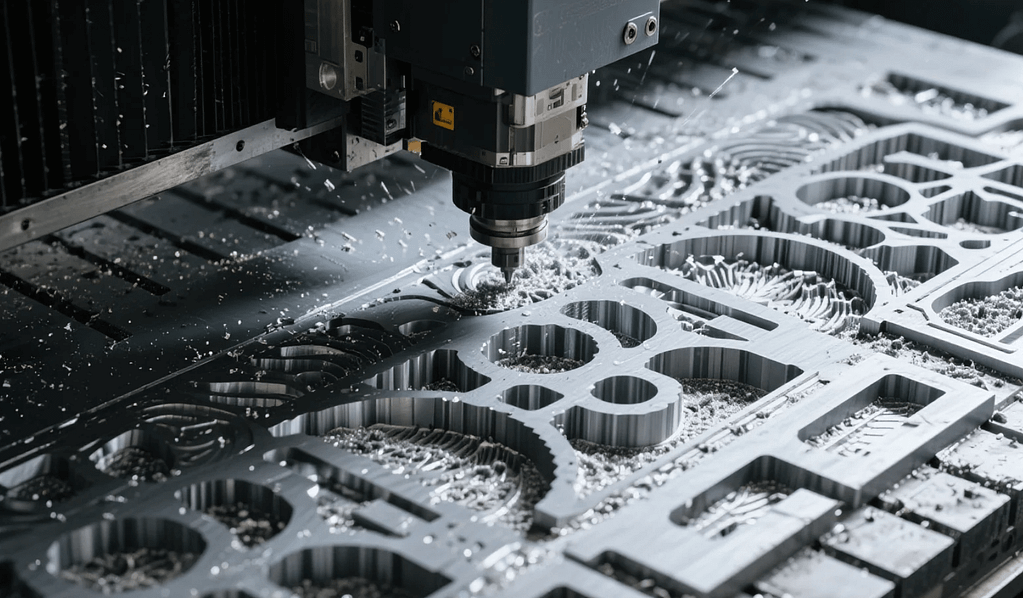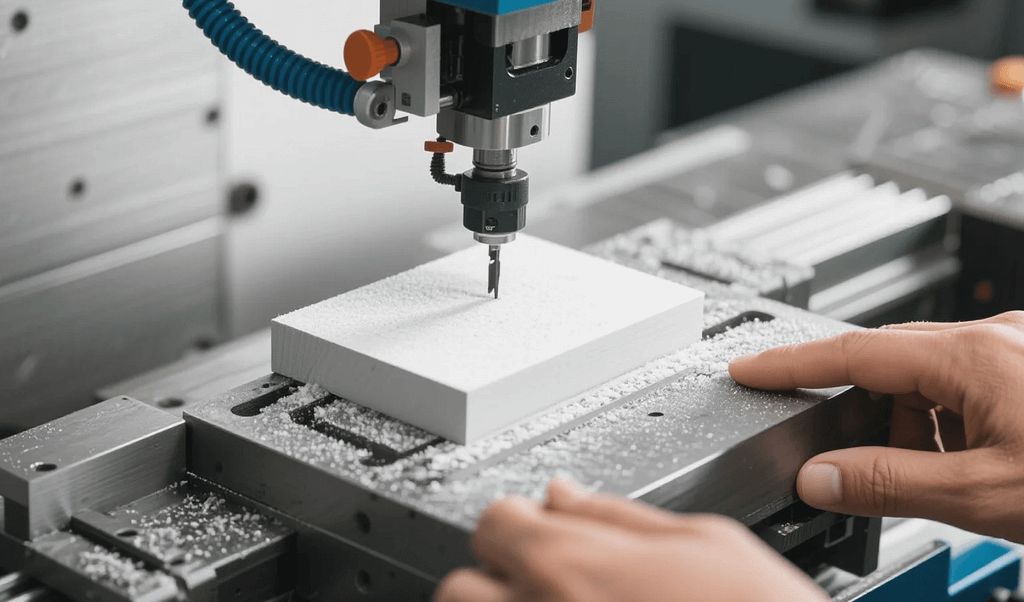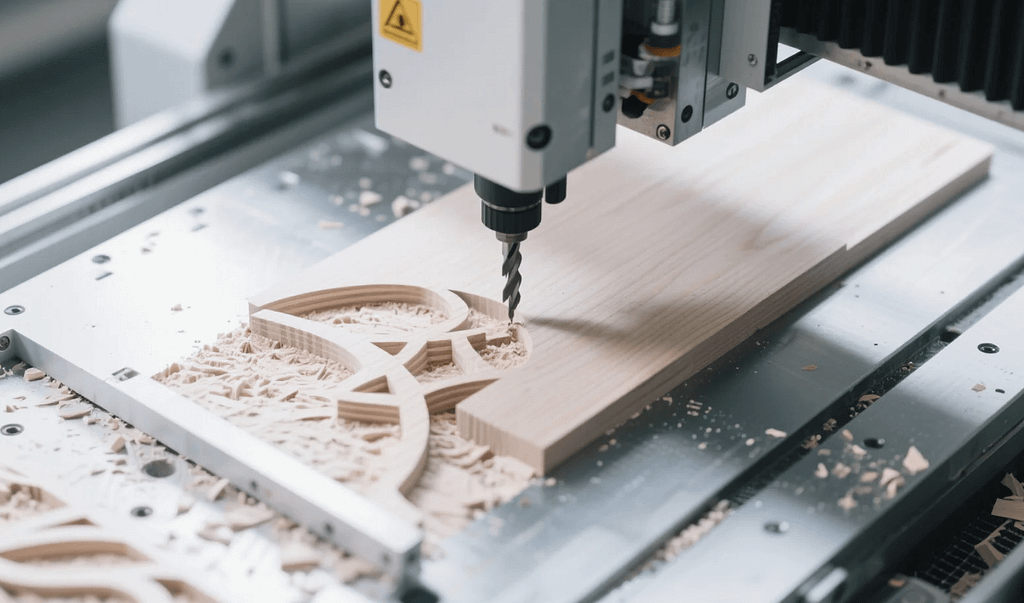Introduction: Is Additive Manufacturing Ready to Replace Subtractive Manufacturing?
The landscape of modern production is constantly evolving, driven by innovations that push the boundaries of what is possible. At the heart of this transformation are two fundamental methodologies for creating physical parts: Additive Manufacturing (AM), often known as 3D printing, and Subtractive Manufacturing (SM), which encompasses processes like CNC machining. For businesses in the high-stakes sector of precision manufacturing, selecting the right process isn’t merely a preference; it is a critical decision that dictates part quality, cost-efficiency, and ultimate performance. While the media frequently highlights the revolutionary potential of AM, the question remains: is it truly poised to displace the long-established mastery of subtractive manufacturing?
This article delves into a deep-dive comparison, moving beyond the hype to offer a practical, focused analysis of both processes specifically tailored for the demanding requirements of precision manufacturing services. We will explore the core mechanics, distinct advantages, and application sweet spots of each, ultimately clarifying why, in the world of tight tolerances and exacting material properties, subtractive manufacturing often remains the undisputed champion. Understanding this distinction provides immense value, enabling smarter investment and design choices for mission-critical components.
Understanding the Core Mechanics

To appreciate the comparative value of these two processes, a firm grasp of their foundational principles is essential. They represent fundamentally opposing approaches to material manipulation, each with unique implications for part geometry, strength, and finish.
The Layer-by-Layer Genesis: Additive Manufacturing
Additive manufacturing (AM) builds components by successively adding material, typically in thin layers, until the final geometry is achieved. The process starts with a 3D digital model, which is then sliced into cross-sections. This digital data guides a machine—be it a Fused Deposition Modeling (FDM) printer, Selective Laser Sintering (SLS) system, or metal-focused Directed Energy Deposition (DED) unit—to deposit, fuse, or solidify material layer upon layer.
AM’s primary strength lies in its ability to create extraordinarily complex geometries and internal features that are impossible or cost-prohibitive to achieve with traditional methods. It excels in design freedom, rapid prototyping, and producing lightweight, optimized lattice structures. However, for precision parts, the nature of the layering process inherently introduces challenges related to surface finish, internal porosity, and material homogeneity, often requiring post-processing to meet stringent requirements.
The Defining Act of Removal: Subtractive Manufacturing
In stark contrast, subtractive manufacturing (SM) begins with a solid block or workpiece, known as a blank, and meticulously removes material to reveal the desired final shape. This is the domain of processes like Computer Numerical Control (CNC) milling, turning, and grinding. High-speed, multi-axis cutting tools precisely carve away excess material under the stringent control of computer programming.
The precision and repeatability of subtractive manufacturing are unparalleled, especially when dealing with hard materials and demanding tight tolerances. Since the material is removed from a solid, homogeneous block, the resulting parts typically exhibit superior mechanical properties, surface integrity, and dimensional accuracy. For precision manufacturing applications—aerospace, medical devices, high-performance industrial equipment—where fractions of a millimeter matter, the stability and control offered by subtractive manufacturing are critical. The focus here is not on geometric complexity for its own sake, but on accuracy, material strength, and an impeccable surface finish.
A Deep Dive into Precision: Tolerances and Surface Finish

In the realm of precision manufacturing, two metrics decisively separate acceptable from exceptional: dimensional tolerance و surface finish. This is where the differences between AM and SM become most pronounced.
Achieving Perfection with Subtractive Manufacturing
For decades, subtractive manufacturing has set the industry standard for precision. Modern CNC machining centers are capable of holding tolerances down to ±0.005 mm (or better), which is essential for components that must interact perfectly, such as mating gears, turbine blades, or medical implants. The rigid setup, highly accurate measurement systems, and continuous, well-understood process ensure that parts are created with predictable and verifiable accuracy.
Furthermore, the milling and grinding processes inherently result in a superior surface finish (low roughness, or Ra value). This is crucial for parts subject to high wear, fatigue, or fluid flow, as a smooth surface minimizes friction, reduces stress concentration points, and enhances component longevity. While advanced AM processes are improving, they generally cannot achieve these fine finishes without significant and often costly secondary operations.
The Tolerancing Challenge for Additive Manufacturing
While التصنيع المضاف offers incredible design flexibility, achieving true precision remains a significant hurdle. Factors like thermal distortion, material shrinkage, and the inherent “stair-stepping” effect of layered construction make maintaining ultra-tight tolerances difficult. Typical AM tolerances often range from ±0.1 mm upwards. For a part destined for a critical assembly, this level of variation is simply unacceptable.
Consequently, many “precision” AM parts still require post-machining (subtractive manufacturing) to finish critical features like holes, bearing surfaces, and mating faces. This hybrid approach adds complexity and cost, yet underscores the reliance of high-precision AM on the final, defining touch of SM.
Material Integrity and Mechanical Performance

The material properties and structural integrity of the final part are paramount for any component used in high-stress, high-cycle environments.
The Strength of a Solid Block: Subtractive Manufacturing
A key advantage of subtractive manufacturing is the consistency of the starting material. When a part is machined from a forged or rolled block of metal, the material’s internal structure is isotropic (uniform in all directions) and virtually free of internal voids or residual stress that can compromise strength. The material’s datasheet properties—yield strength, fatigue life, ductility—are reliably maintained in the final component. This inherent structural integrity makes SM the go-to choice for parts subjected to high loads, extreme temperatures, or cyclic stress, such as aircraft landing gear components or high-pressure valves.
Anisotropy and Porosity in Additive Manufacturing
In contrast, AM parts often suffer from anisotropy (properties varying based on the build direction) and can contain micro-porosity due to the powder fusion or layering process. While post-processing techniques like Hot Isostatic Pressing (HIP) can mitigate porosity, it adds cost and time. This variability and structural weakness can be problematic for components where failure is not an option. For the most demanding precision manufacturing applications, the predictable, certified strength of a machined part often outweighs the geometric benefits of an AM one.
Economic Viability and Production Scale
The choice between AM and SM is also heavily influenced by economic factors, including initial setup, per-part cost, and production volume.
Cost-Effectiveness at Scale: Subtractive Manufacturing
For high-volume production and parts requiring a simple, repeatable geometry, subtractive manufacturing is typically more cost-effective. Once the machine is programmed and tooled, the incremental cost of producing thousands of identical parts drops significantly due to fast cycle times and highly optimized workflows. Furthermore, the cost of raw material is often lower than the specialized powders or resins required for AM. When producing large batches of complex but standard components, the scale and efficiency of CNC machining make it the undeniable economic leader.
The Break-Even Point for Additive Manufacturing
AM’s economic sweet spot lies in low-volume production, custom toolingو complex, consolidated parts. For a one-off prototype or a specialized part where multiple components are merged into a single, intricately designed piece (part consolidation), AM can be surprisingly economical by eliminating complex assembly steps and tooling costs. However, as production volume increases, the high cost of material, slow build times, and the potential need for post-processing quickly shift the economic advantage back towards subtractive manufacturing.
Conclusion: Subtractive Manufacturing’s Enduring Role in Precision
The revolution promised by Additive Manufacturing is certainly underway, offering unprecedented design freedom for prototyping and specialized, non-critical components. However, for companies like Captec Precision that operate at the forefront of high-stakes, precision manufacturing, the core value proposition remains firmly rooted in the proven capabilities of subtractive manufacturing.
The ability to consistently hold ultra-tight tolerances, guarantee superior surface finish, and reliably maintain the mechanical integrity of certified materials ensures that subtractive manufacturing is, and will remain, the gold standard for mission-critical parts. It is the definitive process when accuracy, strength, and component lifespan are non-negotiable. While AM may handle the conceptualization and low-volume personalization, SM is the robust engine that powers the world’s most demanding assemblies and industries. Wise investment and design decisions, therefore, require a clear-eyed understanding of this powerful, enduring distinction.
Frequently Asked Questions (FAQ)
Q1: Does Additive Manufacturing ever completely replace Subtractive Manufacturing?
A: In the immediate future, no. While AM is excellent for prototyping, tooling, and unique geometries, most high-precision, mission-critical parts still require the tight tolerances, superior surface finish, and material integrity that only subtractive manufacturing (CNC machining) can reliably provide. They are often complementary, with AM creating a near-net shape and SM performing the final, precision finishing.
Q2: Which process is better for creating highly complex internal cooling channels?
A: Additive Manufacturing is almost always superior for creating highly complex or organic internal features like cooling channels or lattice structures, as it builds the part layer by layer, unconstrained by tool access. Subtractive manufacturing is limited to features that a cutting tool can physically reach.
Q3: When should I choose Subtractive Manufacturing over Additive Manufacturing?
A: You should choose subtractive manufacturing when your priorities are: tight dimensional tolerances (below ±0.1 mm), superior surface finish, maximum material strength و consistency (low porosity), and high-volume production of parts.